This article originally appeared in the July/August 2020 issue of the Ontario Medical Review magazine.
How OMA went from “zero” experience to supplying more than 500,000 pieces of PPE to Ontario doctors.
As COVID-19 began its relentless spread in early 2020, it quickly became clear that personal protective equipment (PPE) was going to be in short supply.
Most of the world’s PPE is made in China, where COVID-19 was first identified. By the end of January, China had shut down production, throwing the supply chain into chaos.
By early February, Ontario, like many other jurisdictions, was experiencing shortages of PPE, including surgical masks, N95 respirator masks, gowns, gloves, face shields and eye protection, as well as hand sanitizer and cleaning supplies.
Suppliers who did have stores of PPE were prioritizing allocations to hospitals and, eventually, to long-term care homes.
As a result, community-based Ontario physicians, who are responsible for procuring their own PPE, were pushed out of the market and experienced serious PPE shortages, dwindling supply options and skyrocketing prices.
“By mid-March, we were hearing regularly from members about the lack of PPE from their regular suppliers,” said Rena Menaker, OMA’s Senior Director of Change Management and Implementation. “We had zero experience procuring PPE and zero experience with distribution channels. But we needed to do something.”
Determined to help members experiencing shortages, Menaker said the OMA became one of the few medical associations in Canada to secure and distribute donated PPE to physicians, free of charge.
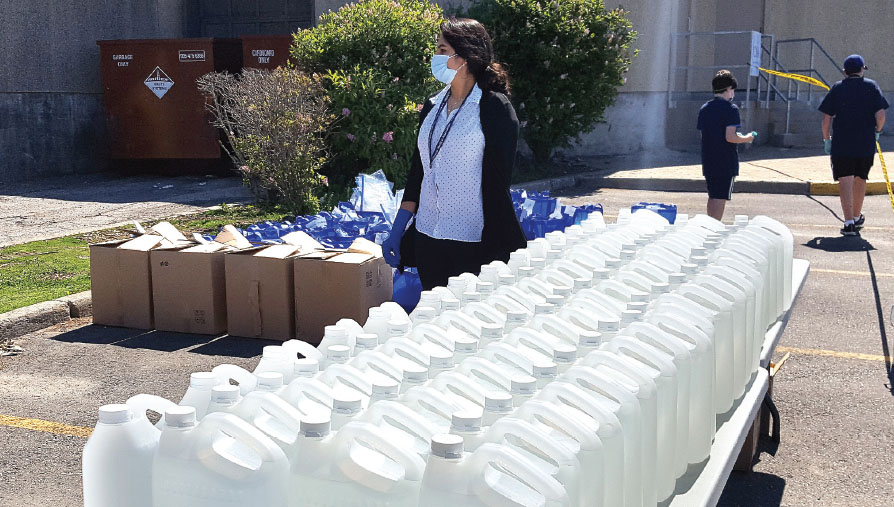
As a first step, OMA Manager of Stakeholder Relations Christine Poopalapillai reached out to her contacts in other regulated health-care associations.
“Initially we were just asking if they had PPE and what they were hearing,” said Poopalapillai. “Then we began asking for donations from providers who were not deemed to be essential services and were temporarily closed.”
OMA’s outreach, done in collaboration with the Registered Nurses’ Association of Ontario, led to donations from dentists, nurses, registered massage therapists and other regulated professions, as well as from estheticians, archivists and municipalities.
As PPE donations started to accumulate, it quickly became clear that the OMA needed to develop ethical guidelines for the allocation of PPE, an inventory to identify physicians’ needs, and storage and distribution capacity.
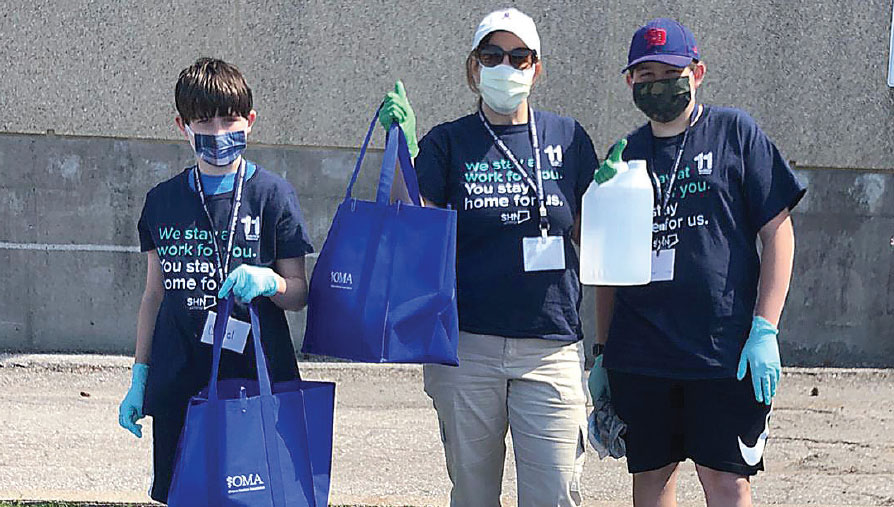
To develop its framework for the equitable allocation of PPE, the OMA looked at the guidelines developed by the University of Toronto’s Joint Centre for Bioethics and consulted with physicians, the provincial government and Ontario Health. Principles that informed the OMA’s guideline included preserving critical health-system functions, minimizing the risk to health-care workers and patients, ensuring a proportional response based on best available evidence of PPE shortages and allocating PPE equitably within and across regions of the province.
Meanwhile, Menaker, along with Dr. Jim Wright, Chief of OMA Economics, Policy and Research (EPR) and Dara Laxer, Executive Director of Health Policy and Promotion, began working with OMA Analytics and IT to develop a tool physicians could use to identify their PPE inventory and needs in real time.
On March 27, OMA launched its PPE Inventory Tool. To use it, members signed in to OMA.org and plugged in information on how many people worked in their practice and how many days’ supply they had of each PPE item. The tool automatically filled in the members’ contact and shipping information.
“Using the data from the tool and the ethical framework, we could identify physicians most in need of PPE,” said Mitch Steffler, a data scientist with OMA Analytics in EPR, who worked with Director of Analytics George Marusic and others on the tool. “We were also able to provide a regional snapshot of where PPE supplies were low, which informed our advocacy efforts to urge the government to address the shortages.”
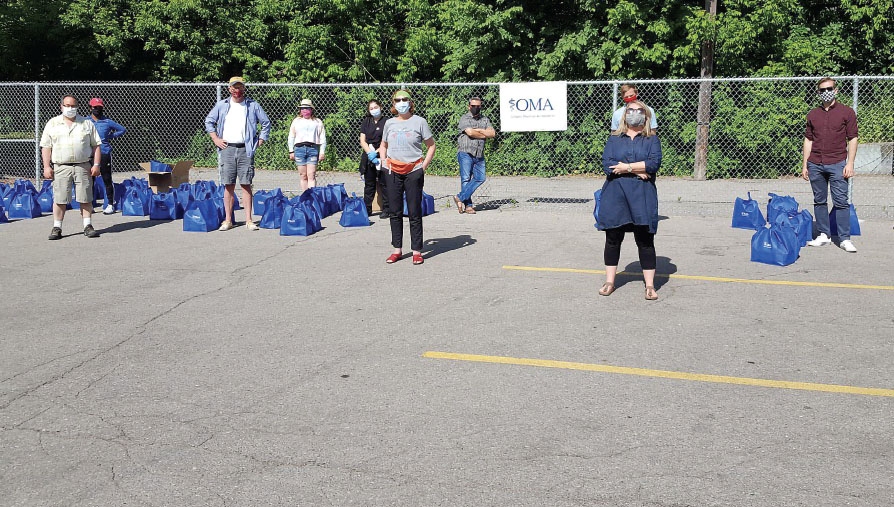
While many regions and networks, as well as the government, developed PPE surveys for physicians, OMA’s PPE Inventory Tool was unique because it allowed data to be collected in real time and to be updated as physicians’ needs changed. “OMA is also the only organization that has contact information for every physician in Ontario and we have relationships with community-based primary care physicians and specialists,” said Menaker.
To support the government’s efforts to provide PPE to community-based physicians, the OMA shared its data with Ontario Health regions who wanted information on PPE levels. The OMA also advised Ontario Health on the development of its own PPE data collection tool.
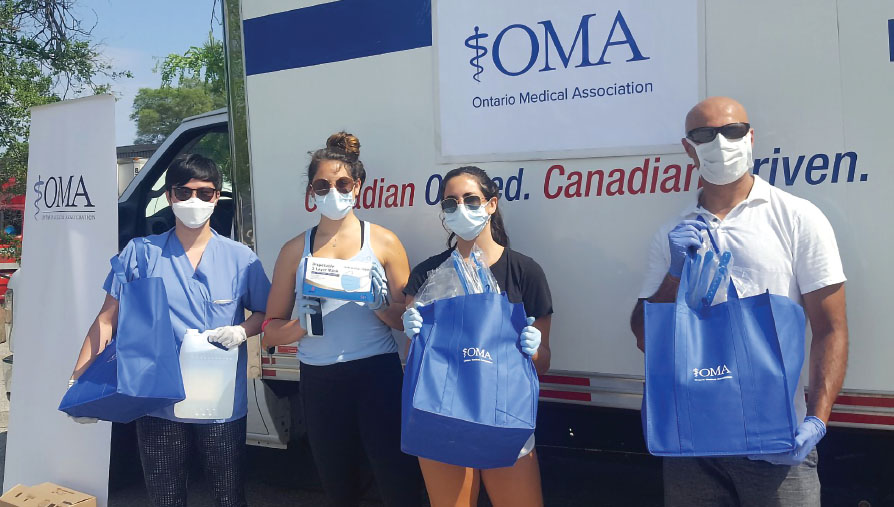
Overall, the OMA PPE Inventory Tool collected 4,000 responses, representing 12,500 health-care workers.
The tool provided data to OMA members and volunteers across the province who were organizing local PPE drives. The OMA also co-ordinated with and provided data and resources to other drives across the province, which agreed to distribute PPE on OMA’s behalf.
“We quickly realized that we needed on-the-ground support to co-ordinate distribution of PPE,” said Menaker. “So we brought in the OMA Regional Manager Team to either co-ordinate PPE drives or assist local drives.”
The OMA also relied heavily on District Chairs to lead and support local drives and to disseminate information about PPE inventories, drives and other resources.
Former OMA President Dr. Nadia Alam led a PPE drive in her community and connected OMA with St. John Ambulance.
“We formed an incredibly valuable partnership with St. John Ambulance,” said Menaker. “They provided depots to safely store PPE and they helped to run the OMA-led drives.”
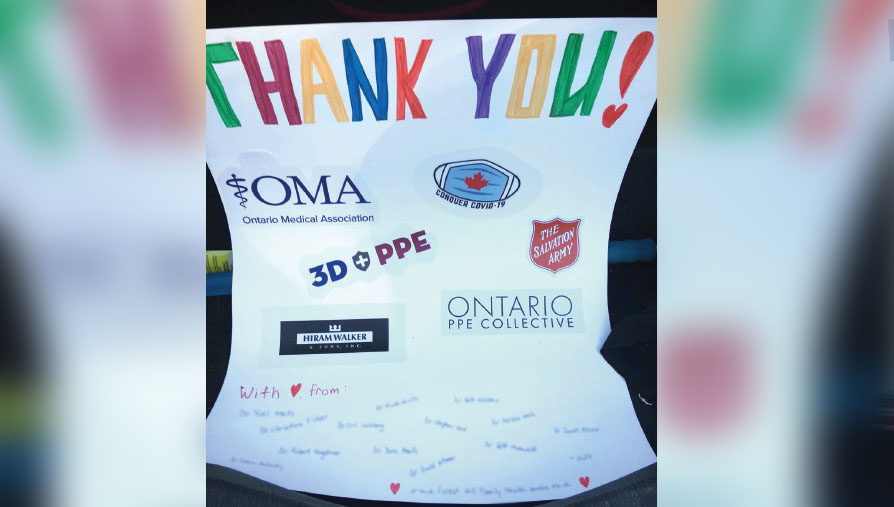
As news of its efforts to supply PPE to community-based physicians spread, the OMA received large donations from Conquer COVID-19 (a volunteer organization facilitating access to PPE for health-care providers), Ontario PPE, 3D PPE GTHA (medical and health profession students from the University of Toronto and McMaster University mobilizing 3D printing to produce PPE), Canadian Shield (a face shield manufacturer) Surgo Medical Supply (a distributor of medical products), and the Ottawa Hospital. Mars Canada also donated candy and chocolate, which was distributed with the PPE.
Most OMA-led drives took place in empty parking lots or other large outdoor spaces, staffed by community volunteers, physician leaders, medical students, and OMA Regional Managers and other staff. Using information from the Inventory Tool, volunteers filled and labelled PPE packages for individual physicians. At the appointed time and place, the physician would arrive in their vehicle, pop their trunk and wait for a volunteer to place the package inside. In some parts of the province, PPE was shipped directly to physicians.
“Every PPE drive required weeks of planning by the Regional Managers and it was tons of work,” said Menaker. “The physicians and other volunteers were great. Some physicians brought their kids to help and several OMA head office staff came out to volunteer at some of the drives.”
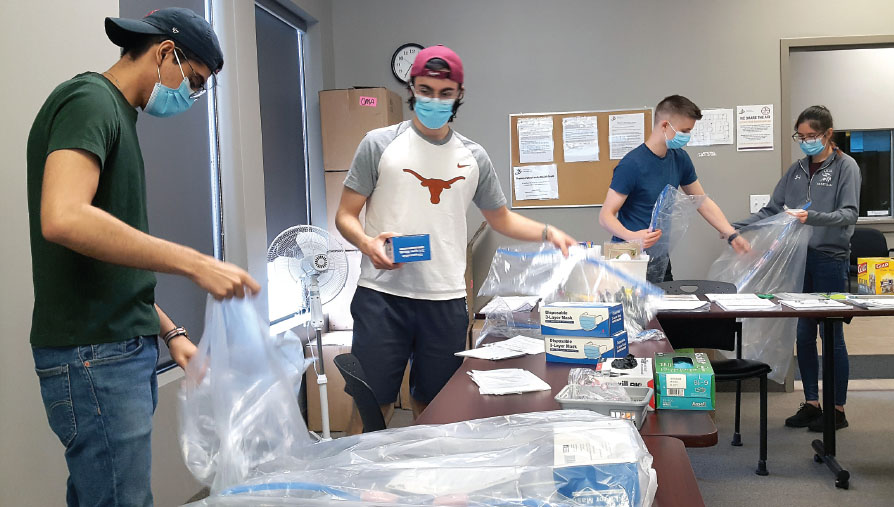
By late July, the OMA and its partners had distributed more than 500,000 masks, 10,000 face shields, 500 gowns and 1,000 litres of hand sanitizer to physicians’ offices across Ontario.
In addition, the Ontario Medical Foundation’s COVID-19 campaign raised $34,000 toward the purchase of PPE as well as donations of 50,000 masks, 24,000 bottles of disinfectant and 3,000 face shields. Many members who received donations said it helped them keep their practices open or safely reopen them.
In addition to its work to secure and distribute PPE, the OMA took steps to ensure that the PPE was being used appropriately and effectively. The OMA Knowledge Translation & Implementation Team (KTI) created quick references to help members better understand the guidance on how and when to use PPE in the context of COVID-19 and how to safely conserve PPE supply through extended use, limited reuse and disinfection.
The OMA is also looking at ways to use the data collected through the Inventory Tool to leverage further research related to COVID-19.
As PPE supply chains began returning to their usual capacity in late June, OMA transitioned its PPE strategy to focus on putting new resources in place to help members obtain PPE.
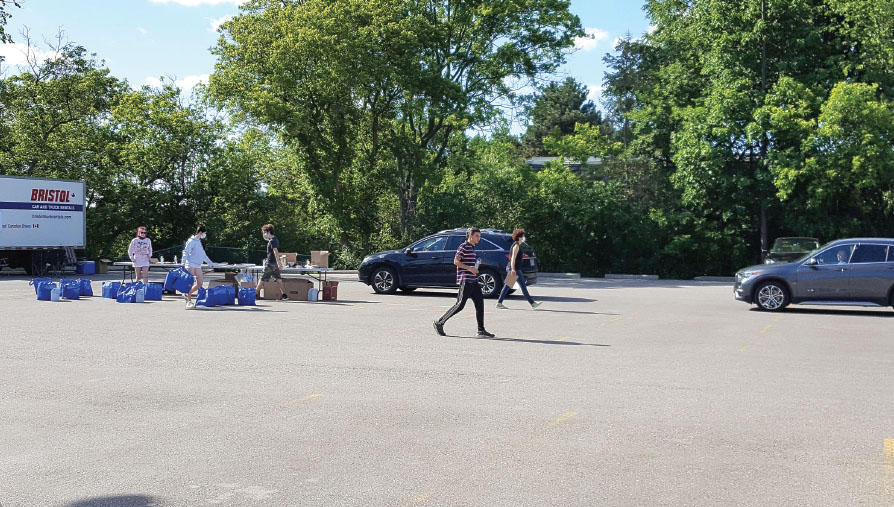
“Throughout the pandemic, OMA was contacted by several companies offering supplies of PPE,” said Mellisa McGinnis, OMA’s Director of Practice Management and Education. “We reviewed about 70 potential suppliers, but only 15 met our requirements, which included valid licensing and certification and having inventory available in Canada.”
On June 27, the OMA launched an eMarketplace list of reputable PPE suppliers. Members can enter the location of their practice and what PPE they are looking for to generate a list of companies that supply that product. With input from industry experts, the KTI Team also developed a checklist to help members validate PPE suppliers. The checklist guides members through questions to ask and requirements to look for to help ensure that a supplier is legitimate, reliable, and has the capacity to deliver certified PPE in a timely manner. It also outlines how to request and interpret a detailed quote.
“The world of PPE was brand new to us,” said McGinnis. “Getting the procurement right has been a huge effort.”
While the OMA team that secured and distributed the PPE to members is relieved that traditional PPE supply chains are coming back online, they are happy with the effort made and very grateful to the donors and volunteers who supported them. In turn, physicians who received the PPE expressed their appreciation through cards and emails.
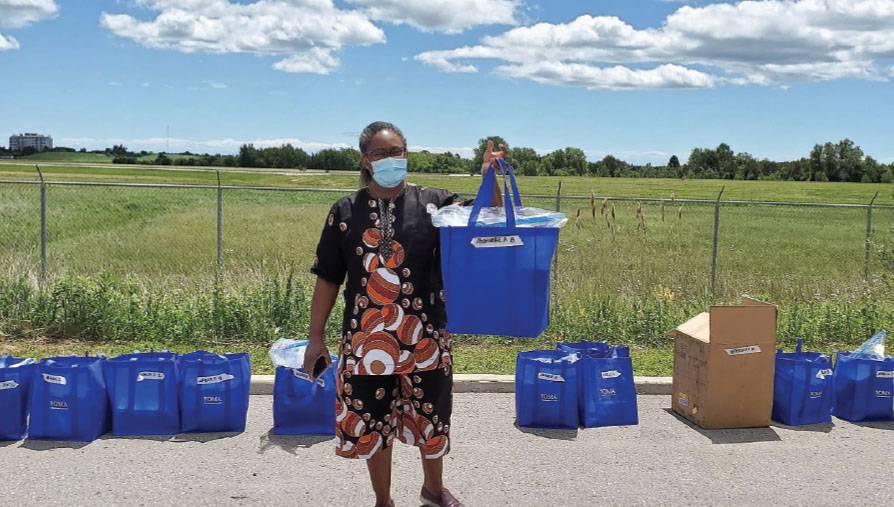
“Members had a sense of partnership and understanding that the OMA had their back and that we were working tirelessly behind the scenes to get them what they needed,” said Frank Rubini, OMA Regional Manager for Districts 1 and 2, which cover southwestern Ontario. “With the support of Rena Menaker and her team, EPR and the entire OMA, members felt supported during these uncertain times.”
Menaker describes the effort as “a really great example of cross-functional teamwork and people across OMA using their skills and expertise in new and innovative ways during a crisis. I feel incredibly proud of the team and how everyone worked together to provide physicians with the help they needed during COVID-19 so they were able to work, protect themselves and keep their patients and staff safe.”
Access all OMA resources and information on personal protective equipment and other critical supplies, as well as other practice tools, resources and information related to COVID-19.
Susan Hanna is a Toronto-based writer.